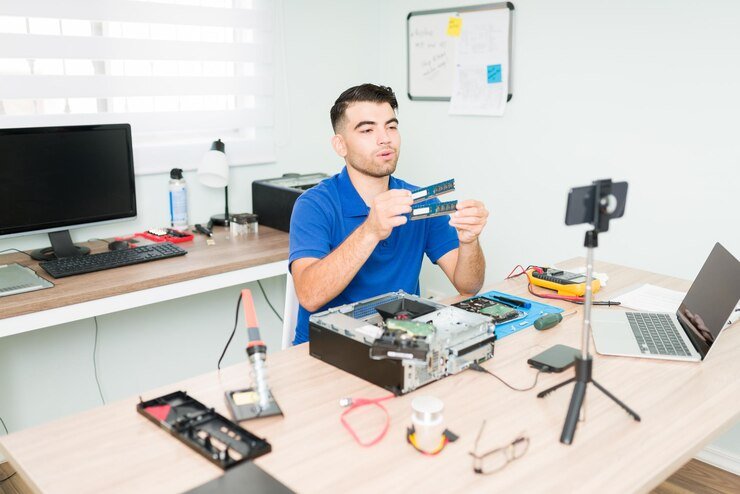Introduction
Mobile phones have become an integral part of our lives, and when they malfunction, it can be frustrating. That’s where mobile phone repair shop technicians come in. These skilled professionals are trained in various techniques, including circuit board soldering, which is crucial for fixing electronic components. In this blog post, we will explore some essential circuit board soldering techniques used by mobile phone repair shop technicians.
Soldering Basics
Before diving into specific techniques, let’s first understand the basics of soldering. Soldering is the process of joining two or more metal components using a filler metal called solder. The solder is heated to its melting point, and then it flows into the joint, creating a permanent bond as it cools down.
When it comes to mobile phone repairs, technicians primarily use two types of soldering techniques: through-hole soldering and surface mount soldering.
Through-Hole Soldering
Through-hole soldering is a traditional method that involves inserting leads of electronic components through holes on a circuit board and soldering them on the opposite side. This technique is commonly used for repairing older mobile phone models or components with larger leads.
The process of through-hole soldering involves the following steps:
- Preparation: The technician starts by cleaning the circuit board and the component leads to ensure a clean and solid connection.
- Tinning: Tinning refers to the process of applying a thin layer of solder to the component leads and the corresponding holes on the circuit board. This helps in creating a better bond during the soldering process.
- Placement: The technician carefully inserts the component leads through the appropriate holes on the circuit board.
- Soldering: Using a soldering iron, the technician applies heat to the joint area and feeds solder wire into the joint. The solder melts and flows around the joint, creating a strong connection.
- Cleaning: After soldering, any excess flux or solder is cleaned using isopropyl alcohol or a specialized cleaning solution.
Surface Mount Soldering
Surface mount soldering is a more modern technique used for repairing newer mobile phone models that have smaller and more compact components. Unlike through-hole soldering, surface mount soldering does not involve inserting leads through holes. Instead, the components are directly mounted onto the surface of the circuit board.
The process of surface mount soldering involves the following steps:
- Preparation: The technician prepares the circuit board by applying solder paste to the designated areas where the components will be placed. The solder paste contains tiny balls of solder suspended in a flux medium.
- Placement: Using specialized equipment such as tweezers or a pick-and-place machine, the technician carefully places the surface mount components onto the solder paste.
- Reflow: The circuit board is then heated using a reflow oven or a hot air gun, causing the solder paste to melt and create a bond between the components and the circuit board.
- Inspection: After reflow, the technician inspects the solder joints for any defects or inconsistencies. Any necessary touch-ups or repairs are made at this stage.
Tips for Successful Soldering
Regardless of the soldering technique used, there are some general tips that can help mobile phone repair shop technicians achieve successful soldering:
- Temperature Control: It is crucial to maintain the correct soldering temperature to prevent damage to the components or the circuit board.
- Use the Right Tools: Using the appropriate soldering iron, solder wire, and flux can make a significant difference in the quality of the solder joint.
- Practice Good Technique: Proper hand-eye coordination, steady hands, and precise movements are essential for accurate soldering.
- Inspect and Test: After soldering, it is important to inspect the joints and test the repaired mobile phone to ensure everything is functioning correctly.
Conclusion
Circuit board soldering is a crucial skill for mobile phone repair shop technicians. Whether it’s through-hole soldering or surface mount soldering, these techniques enable technicians to fix electronic components and restore functionality to mobile phones. By following proper soldering techniques and using the right tools, technicians can ensure successful repairs and satisfied customers.





